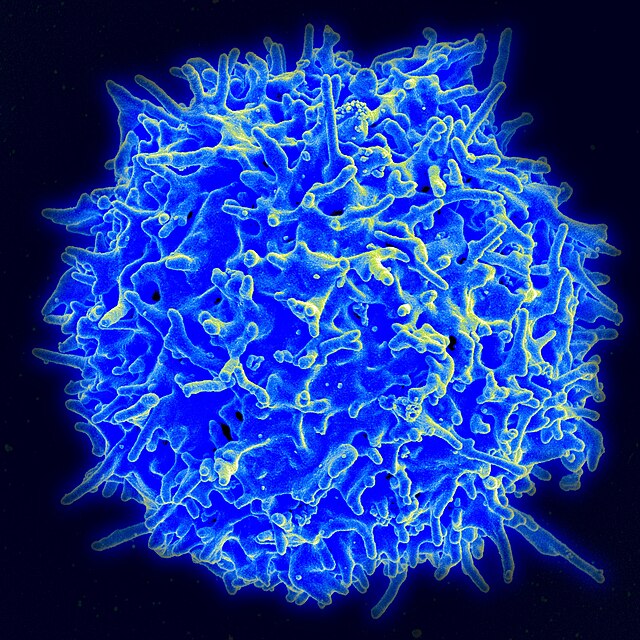Loading AI tools
Any disease affecting peripheral nerves on both sides of the body From Wikipedia, the free encyclopedia
Polyneuropathy (from Greek poly- 'many' neuro- 'nerve' and -pathy 'sickness') is damage or disease affecting peripheral nerves (peripheral neuropathy) in roughly the same areas on both sides of the body, featuring weakness, numbness, and burning pain.[1] It usually begins in the hands and feet and may progress to the arms and legs and sometimes to other parts of the body where it may affect the autonomic nervous system. It may be acute or chronic. A number of different disorders may cause polyneuropathy, including diabetes and some types of Guillain–Barré syndrome.[4][5][6]
| Polyneuropathy | |
|---|---|
 | |
| Micrograph showing peripheral neuropathy (vasculitis). Polyneuropathy is peripheral neuropathy occurring in the same areas on both sides of the body. | |
| Specialty | Neurology |
| Symptoms | Ataxia[1] |
| Causes | Hereditary (Charcot–Marie–Tooth disease), and acquired (alcohol use disorder)[2] |
| Diagnostic method | Nerve conduction study, urinalysis[3][1] |
| Treatment | Occupational therapy, weight decrease (management)[1] |
Polyneuropathies may be classified in different ways, such as by cause,[2] by presentation,[1] or by classes of polyneuropathy, in terms of which part of the nerve cell is affected mainly: the axon, the myelin sheath, or the cell body.[7][8]

Among the signs and symptoms of polyneuropathy, which can be divided (into sensory and hereditary) and are consistent with the following, are:[1]
The causes of polyneuropathy can be divided into hereditary and acquired and are therefore as follows:[2]

The pathophysiology of polyneuropathy depends on the type. Chronic inflammatory demyelinating polyneuropathy, for instance, is an autoimmune disease: T cells involvement has been demonstrated, antibodies alone are not capable of demyelination.[16]

The diagnosis of polyneuropathy begins with a history (anamnesis) and physical examination to ascertain the pattern of the disease process (such as arms, legs, distal, proximal), if they fluctuate, and what deficits and pain are involved. If pain is a factor, determining where and how long it has been present is important; one also needs to know what disorders are present within the family and what diseases the person may have. Although diseases often are suggested by the physical examination and history alone, tests that may be employed include electrodiagnostic testing, serum protein electrophoresis, nerve conduction studies, urinalysis, serum creatine kinase (CK) and antibody testing; nerve biopsy is done sometimes.[1][3]
Other tests may be used, especially tests for specific disorders associated with polyneuropathies; quality measures have been developed to diagnose patients with distal symmetrical polyneuropathy (DSP).[17]
In terms of the differential diagnosis for polyneuropathy, the following must be considered:

In the treatment of polyneuropathies one must ascertain and manage the cause, among management activities are: weight decrease, use of a walking aid, and occupational therapist assistance. Additionally, BP control in those with diabetes is helpful, while intravenous immunoglobulin is used for multifocal motor neuropathy.[1]
According to Lopate, et al., methylprednisolone is a viable treatment for chronic inflammatory demyelinative polyneuropathy (which can also be treated with intravenous immunoglobulin). The authors also indicate that prednisone has greater adverse effects in such treatment, as opposed to intermittent (high-doses) of the aforementioned medication.[1][21]
According to Wu, et al., in critical illness polyneuropathy supportive and preventive therapy are important for the affected individual, as well as, avoiding (or limiting) corticosteroids.[22]
Seamless Wikipedia browsing. On steroids.
Every time you click a link to Wikipedia, Wiktionary or Wikiquote in your browser's search results, it will show the modern Wikiwand interface.
Wikiwand extension is a five stars, simple, with minimum permission required to keep your browsing private, safe and transparent.